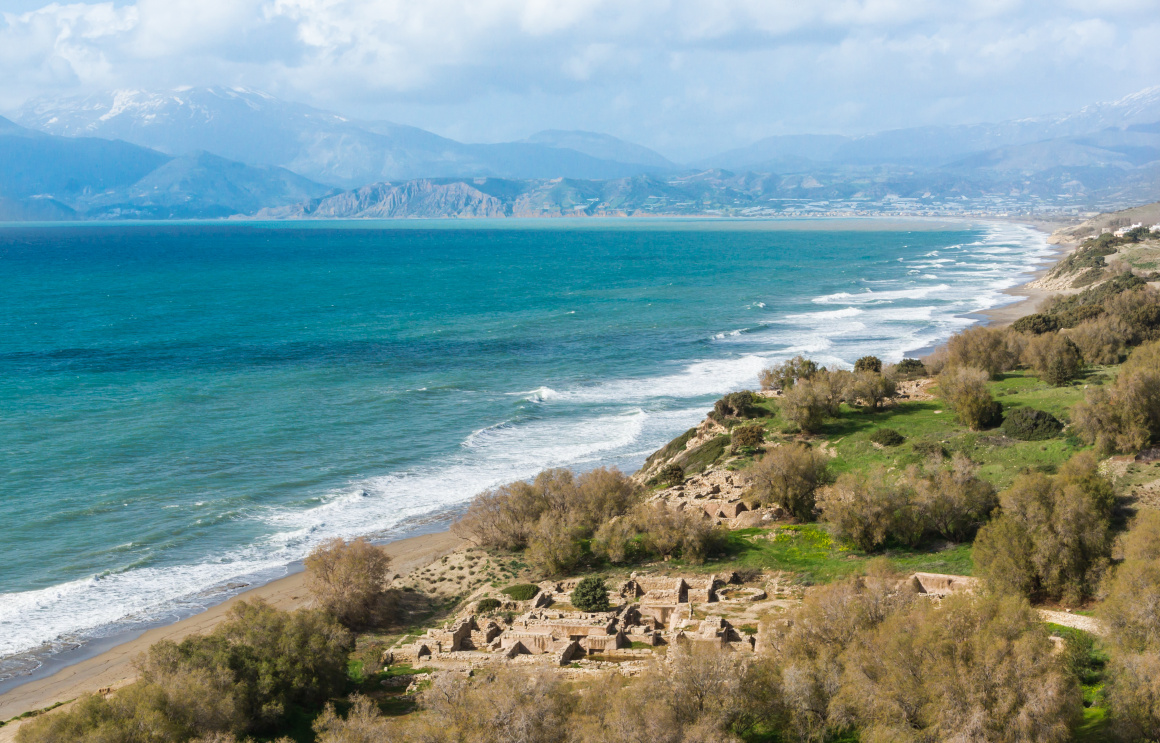February in Crete is still winter, but a notch milder and a hint brighter than January. Average high temperatures creep up to about 16 °C (61 °F), with lows around 9 °C (48 °F) – essentially on par with January, perhaps a degree warmer. Rainfall begins to lessen a little, roughly 65 mm of rain falls in February over around 8 days of the month. You'll likely get a blend of crisp sunny days and wet, windy ones. The weather is unpredictable – it can seesaw between cold, rainy spells and almost spring-like warm afternoons. Sunshine increases to about 4.5–5 hours per day on average, so there are more opportunities to enjoy the outdoors when the clouds part. Notably, the almond trees begin to blossom, sprinkling the Cretan countryside with lovely pink-white flowers – a sure sign that spring is around the corner even as the air still feels wintry.
Snow still caps the higher mountains, but coastal areas will very rarely see any snow (perhaps a brief flurry once in a decade). The sea remains cold at 15–16 °C (59–61 °F), so swimming is generally off the itinerary for now. However, on a calm sunny day, you might see a few locals taking a quick dip – Cretans say it's good for the circulation! Practical tips: Dress in layers – you might experience 18 °C sunshine at midday but 8 °C after sunset. An umbrella or rain jacket is wise to have on hand. Many rural villages are quiet this time of year, but towns are gearing up for spring. If you're around in late February, keep an eye out for local festivals – often Carnival season (Apokries) festivities begin in villages and towns, leading up to the big Carnival in Rethymno Old Town – a fun chance to see locals in colourful costumes and join the celebration. Visiting Crete in February offers a peaceful experience with the bonus of seeing early blooms and maybe enjoying a sunny taverna lunch by the sea on an unexpectedly warm day.



 'The archaeological site, and the bay of Komos, the ancient harbor of Phaïstos, Crete, Greece.'
'The archaeological site, and the bay of Komos, the ancient harbor of Phaïstos, Crete, Greece.'